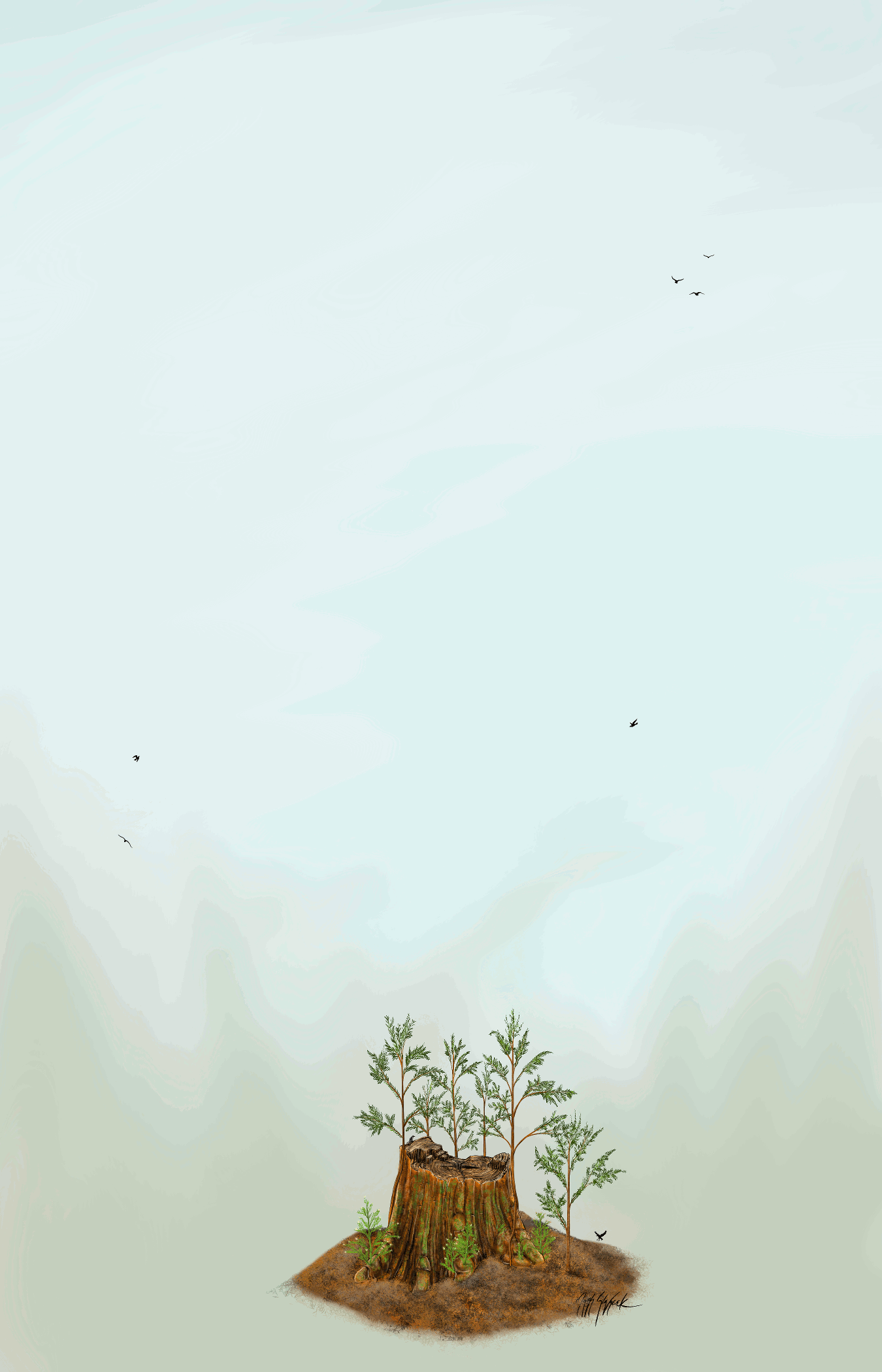
NPS Staff Florissant's Fossil Redwoods (Sequoia affinis)Sequoia (redwood) is the fossil genus easiest for park visitors to see at Florissant because of the large petrified stumps. The fossils are most closely related to the modern Coast Redwood (Sequoia sempervirens) and more distantly related to the Sierra Redwood (Sequoiadendron giganteum). During the Eocene, Sequoia was widespread around the Northern Hemisphere before it became restricted to its modern relict distribution along the coast of California and Oregon today. This reconstruction shows Florissant’s famous Redwood Trio, which is a single tree with three interconnected trunks that originated from sprouting around the base. 
Reconstruction GIF: NPS/SIP/Mariah Slovacek; Photograph: NPS Staff Growing ClonesThis artist reconstruction shows the possible growth of the fossilized redwood trio. Stumps of damaged or fallen redwood trees sprout new growth from basal shoots around the still-living roots of the tree. These clones are genetically identical to the original tree, and the new trunks grow into mature trees.
NPS/SIP/Mariah Slovacek Cones and FoliageThe fossils of Sequoia at Florissant include wood (petrified stumps), foliage, seed cones, pollen cones, and pollen. The preserved fossils of these various organs allow us to reconstruct what these tall Sequoia trees looked like. Compared to the modern Coast Redwood, the fossil cones were smaller, and the leaves were thinner and often pressed more closely along the branch. 
NPS/SIP/Mariah Slovacek Foliage to Fossil 

Left image
Right image

Photograph: Hugh Wingate; Provided Courtesy of Doug Nichols Fossilized Redwood PollenThe distinctive pollen of Sequoia developed in the male pollen cones and dispersed in the wind, some of it landing in the lake.The shale can be dissolved in various acids in the lab to remove the rock sediment, leaving the resistant pollen behind. This pollen-rich residue can be mounted on a microscope slide to identify the different kinds of plants, including Sequoia. |
Last updated: September 5, 2025
